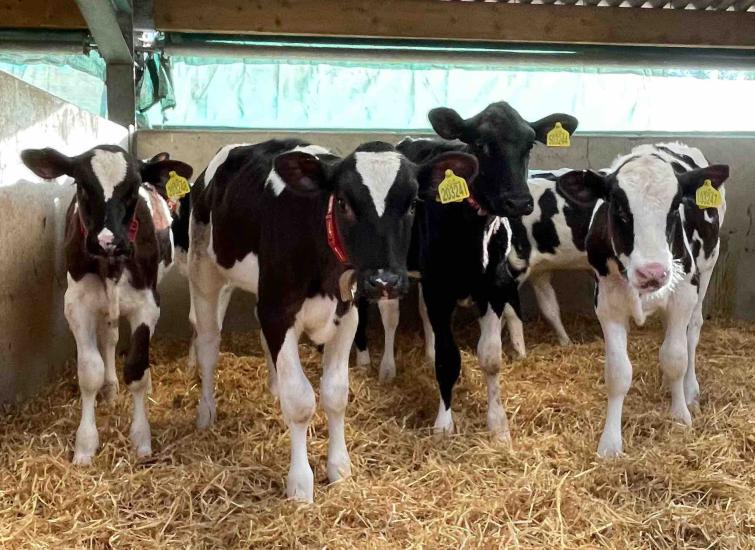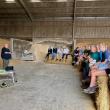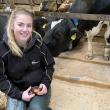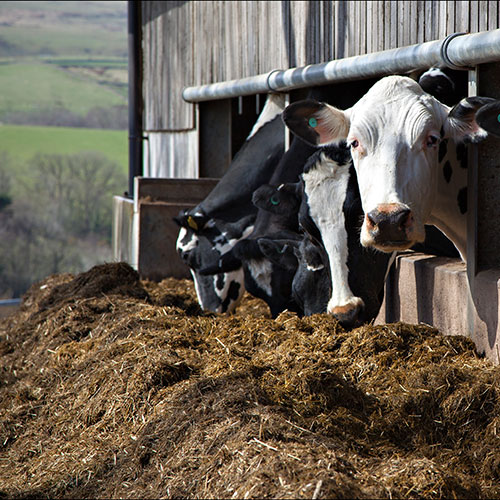The transition from parlour to robots was a big change to our business but it was reassuring to have Eoghan Mullery from Advanced Robot on board to push us and really maximise margin.
Reduce first calving age without milk-yield compromise
The industry is seeing a reduction in heifer age at first calving, and this can also come with a higher first-lactation yield. We spoke to a youngstock specialist to find out more. First published in Cow Management.

Producers should aim for an average age at first calving of 24 months old, and certainly within a range of between 22 and 26 months. Research confirms that heifers calving within this range will experience fewer health problems and, ultimately, produce more milk. “But achieving this target must not come at the expense of future heifer production,” says Advanced Ruminant Nutrition’s Liz Newman. Milk records from 200 herds, collected across the dairy industry, reveal that average age at first calving (AFC) has fallen during the past five years by 1.2 months, from 26.7 to 25.5 months old (see Table 1).

The range of AFC has also narrowed by 6.5 months but, during the same period, heifer milk production has decreased by 3.5%.
Miss Newman says that the main objective of rearing dairy replacements is to optimise growth and rumen development. The former provides the opportunity to improve lifetime production and resilience of dairy cows. “Producers are succeeding at getting maiden heifers in calf earlier but failing to grow heifers to the size they should be in order to fully realise their yield potential,” she says.
“When setting heifer-rearing objectives it is important to understand the high expectations we place on our replacements. We need them to join the herd at the optimal age, weight and height. And we want them to calve easily and transition well into the milking herd.
First-lactation yield “Heifers must also have strong feet, get back in calf easily, and reach at least a third lactation. Their expected first-lactation milk yield is between 82% and 85% of third-lactation cows. Ultimately, they must generate a return on the time and money invested in rearing them.”
Achieving these targets is no small task. Every key performance indicator (KPI) is interconnected, with each factor influencing the overall success of the heifer’s development and long-term productivity.
“To get this right requires utilising a combination of accurate data and herd-management experience to make informed decisions that drive measurable results,” she says.
“It is possible for heifers to calve in at the optimal time, and to reach 82% of adult cow production. We have high-yielding herds that are achieving this.
“They do this by setting targets for each growth stage, both in terms of heifer weight and ‘structure’ or development. Producers must be able to measure and monitor to check that they are achieving these targets. They can then react quickly and be proactive, making any required changes to calf and heifer-rearing management,” she explains. Herd analysis Table 1 shows the latest average figure for heifer milk production as 76% of cow production. Miss Newman’s analysis of herds that are working with Advanced Ruminant Nutrition reveals an average of 80.6%. Booth Hall is home to one herd that’s bucking the trend. Producers Neil and David Kidd have successfully reduced AFC, while increasing heifer production, both compared to cows and in litres. The brothers milk 160 Holstein cows, rearing their own replacements on an all-year-round calving system. Herd average yield, based on a 305-day lactation, has increased from 10,000 to 11,500 litres. During the past five years, after introducing strategic protocols to manage heifer growth and improve performance, they have reduced their average AFC by four months and are now calving heifers for the first time at an average age of 24 months old. The target for heifer production on this farm was between 82% and 85% of cow production – they are currently hitting 84%. Heifers were previously achieving 72.7%.
The Kidds have always recognised that investing in heifer rearing is essential to secure the future of their herd. The dairy team takes a holistic approach to herd management, considering everything from the environment, to ensuring calf comfort, minimising stress through periods of change, and optimising nutrition. At the heart of their success is a commitment to measuring, monitoring and managing every step of the process.
“The units we work with are constantly measuring and monitoring heifer growth and health status to ensure producers can react quickly to resolve any issues that may be standing in the way of hitting the targets they set,” says Miss Newman.
Research shows a positive correlation between enhanced growth rates at various stages of development and higher first-lactation milk yields. “We know the cost per kilogramme of liveweight gain at each stage, allowing us to tailor our rearing plans accordingly,” adds David Kidd. Calf-rearing review He and Neil have invested in a new calf shed and installed automatic milk feeders. “We started by focusing on ensuring that calves get off to the best possible start, improving colostrum management, setting up precise feed curves on the calf feeders and using a quality skim-based milk replacer that’s enriched with a high-specification mineral pack,” adds Mr Kidd. Poor nutrition and infectious diseases are two of the biggest threats to calf growth rates. “At one point, the farm faced a coccidiosis challenge and, under vet guidance, the calves were fed medicated feed for a period until we understood the bottlenecks and changed our approach.”Once the health issues were resolved, the brothers focused on refining nutrition, reviewing the starter and rearer feed, and then switching to a formulation specifically designed to promote rumen development and support good structural and mammary growth.
“This change required removing medication from the feed, but with close vet support and meticulous on-farm management, we successfully made the transition without experiencing a coccidiosis outbreak,” says Mr Kidd.
“We have different target growth rates, depending on the age of the calves. This ensures that we’re getting the growth required to unlock the heifers’ genetic potential.” The Kidd brothers’ success is driven by attention to detail and a commitment to continuous measuring and monitoring. With KPIs in place, and the team tracking data closely, they can respond quickly to any changes that may potentially impact calf growth.
“Like any unit, they have faced challenges with infectious diseases,” adds Miss Newman. “But they collaborate with their vet if issues come up to ensure rapid recovery. The result is healthier calves and improved production when the heifers enter the herd.”
〈 BACK




